.
How do I know what ATS balancing machine model (Vertical, horızontal, cradle, driveshaft, static, dynamic) Is the best for my application?
Choosing the right ATS balancing machine model depends on several factors, including the type of component you want to balance, its size, weight, and operating conditions. Here’s how to determine the best fit for your needs:
Component Type:
If you are balancing rotors, shafts, or other cylindrical parts, a horizontal balancing machine is typically ideal.
For disc-shaped components, such as fans or flywheels, a vertical balancing machine may be more suitable.
Operation Speed:
Dynamic balancing machines are best for high-speed applications where precision is critical.
Static balancing machines work well for low-speed or stationary components.
Weight and Size:
For larger or heavier components, a cradle-type balancing machine offers robust support.
Smaller components may be efficiently balanced with compact static or dynamic machines.
Application Specifics:
For driveshaft applications, ATS provides specialized driveshaft balancing machines that address unique alignment needs.
If you’re unsure which model is best for your application, the ATS team is here to help. Contact our experts to discuss your requirements and receive tailored recommendations.
Related Topics:
